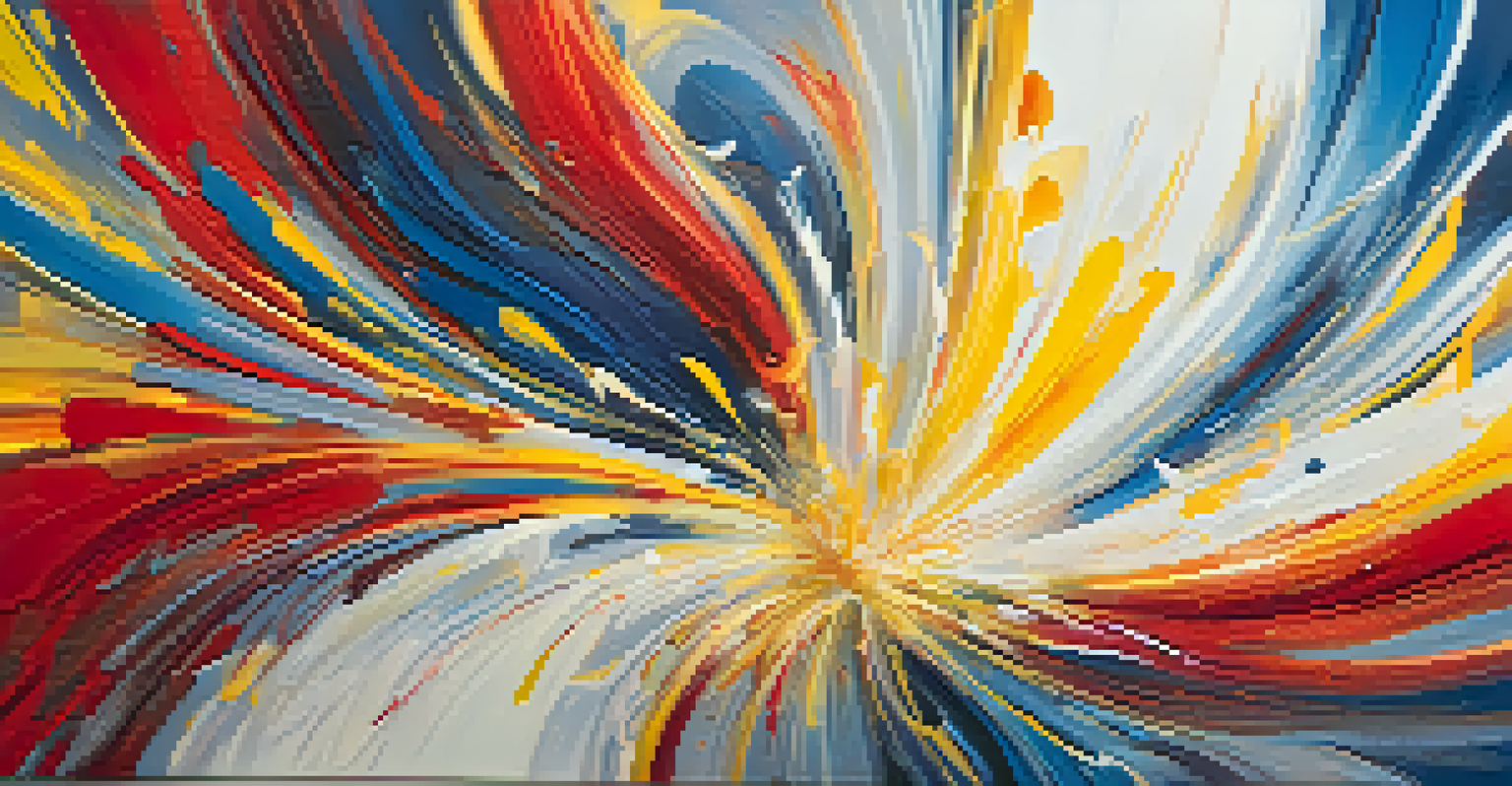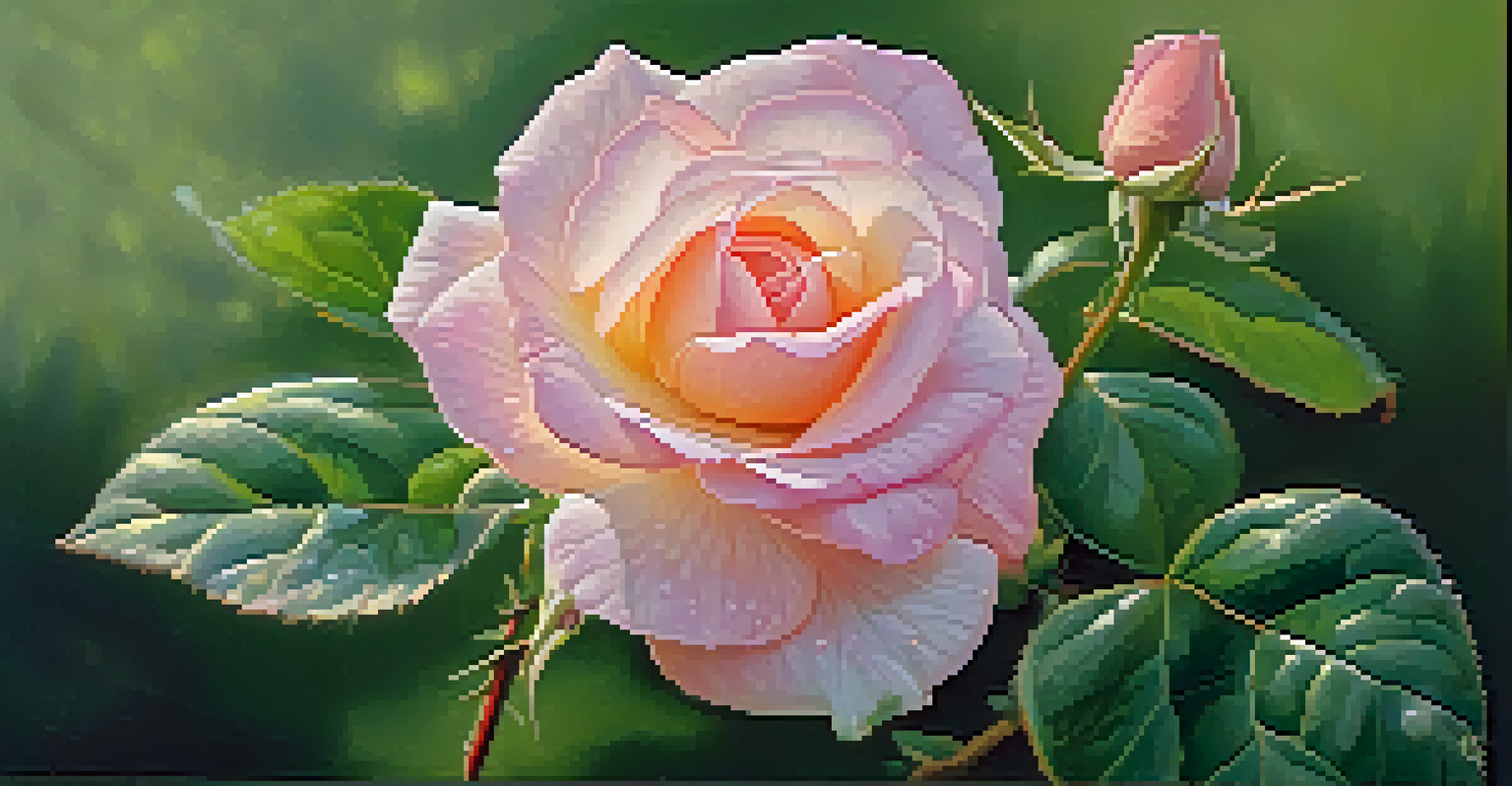The Use of Imagery in Poetry and Its Artistic Counterparts

Understanding Imagery: The Heartbeat of Poetry
Imagery in poetry serves as a powerful tool that evokes sensory experiences, allowing readers to visualize, hear, and even feel the emotions conveyed. Think of it as painting a picture with words, where each line adds depth and color to the overall scene. For example, when a poet describes a sunset with vivid details, readers can almost see the golden hues melting into the horizon.
Poetry is the art of uniting pleasure with truth.
This sensory engagement draws readers deeper into the poem, creating a more immersive experience. It's not just about what is being said; it's about how it's being expressed. The more relatable and vibrant the imagery, the stronger the connection between the poet and the audience.
By using metaphors, similes, and descriptive language, poets craft intricate images that linger in the mind, much like a memorable painting. This ability to conjure vivid mental pictures is what makes poetry a unique and powerful form of art.
Visual Arts: The Parallel World of Imagery
Just as poetry employs imagery, visual arts utilize similar concepts through colors, shapes, and textures to communicate emotions and ideas. A painting, for instance, can evoke the same feelings a poem does, as both mediums rely on the viewer's or reader's interpretation. Consider how a piece of abstract art can stir emotions just as a well-crafted stanza can.

Visual artists use composition and color palette to create a mood, much like poets choose words and structure to enhance their themes. This shared reliance on imagery makes it fascinating to explore how both art forms influence and inspire each other. Imagine walking through an art gallery while reading a poem; the two experiences can beautifully intertwine.
Imagery Enhances Emotional Connection
Imagery in poetry and visual arts evokes sensory experiences that deepen the emotional connection between the creator and the audience.
Artistic expression, whether through paint or words, shares the goal of evoking a response. As viewers and readers engage with these works, they find themselves on a journey of interpretation, drawing personal connections to the imagery presented.
Symbolism: Bridging Poetry and Visual Art
Symbolism plays a crucial role in both poetry and visual arts, as it allows artists to convey deeper meanings through imagery. In poetry, a simple rose might symbolize love or beauty, while in a painting, it could represent fragility or transience. This ability to layer meaning adds richness and complexity to the work, inviting readers and viewers to look beyond the surface.
Art is the most beautiful of all lies.
Both poets and visual artists often draw from cultural symbols that resonate with their audience, making their work more relatable. For instance, a poet might reference a storm to symbolize turmoil, while a painter might depict the same storm to visually express chaos. This interplay of symbols creates a dialogue between the two forms of art.
When we recognize these symbols, we unlock new interpretations and insights, enhancing our appreciation for the art. Thus, imagery and symbolism become intertwined, enriching our experience whether we are reading a poem or gazing at a piece of art.
The Role of Emotion in Imagery Creation
Emotion is the driving force behind the use of imagery in both poetry and visual arts. Poets often draw from personal experiences, channeling their feelings into vivid descriptions that resonate with readers. For example, the anguish of loss can be depicted through dark, heavy imagery that evokes a sense of sorrow.
Similarly, visual artists express their emotions through color and form, creating pieces that reflect their inner world. A canvas splashed with vibrant colors might convey joy, while muted tones could represent melancholy. This emotional connection allows audiences to feel what the artist is expressing, fostering empathy and understanding.
Symbolism Adds Depth to Art Forms
Both poetry and visual arts use symbolism to convey complex meanings, inviting audiences to explore deeper interpretations.
By tapping into our emotions, both poets and visual artists engage us on a deeper level, making their work not just an aesthetic experience but also a personal one. This shared emotional landscape makes it possible for readers and viewers to connect with the art in profound ways.
Imagery Techniques: Crafting Vivid Experiences
Both poets and visual artists employ specific techniques to enhance their imagery. In poetry, techniques like alliteration, assonance, and enjambment can create rhythm and flow, guiding readers through the imagery. These choices shape how we experience the poem, making it an art form that relies heavily on sound and structure.
In visual arts, techniques such as perspective, contrast, and composition serve a similar purpose. An artist might use perspective to draw the viewer's eye into the depth of the image, much like a poet draws readers into the layers of meaning within a verse. These deliberate choices are essential for creating impactful imagery.
By understanding these techniques, audiences can appreciate the craftsmanship involved in both poetry and visual arts. This knowledge enhances our experience, allowing us to see the artistry behind the imagery and the intention behind each choice made by the creator.
Cultural Influences on Imagery in Art Forms
Cultural contexts significantly shape the imagery found in poetry and visual arts. Different cultures have unique symbols, metaphors, and artistic expressions that influence how imagery is created and perceived. For instance, nature imagery may hold different meanings in various cultures, reflecting their values and beliefs.
Poets often draw inspiration from their cultural backgrounds, weaving in elements that resonate with their audience. A poem about a harvest festival might evoke feelings of community and gratitude, while a visual piece depicting the same event might focus on the vibrancy of the celebration. This cultural interplay enhances the richness of the imagery.
Cultural Context Shapes Imagery
Cultural influences significantly impact how imagery is created and perceived, reflecting diverse values and beliefs across different societies.
As we explore these art forms, we uncover layers of meaning tied to cultural narratives. This understanding allows us to appreciate the nuances of imagery and how it reflects the diverse experiences of humanity throughout history.
The Impact of Imagery on Audience Interpretation
Imagery profoundly influences how audiences interpret poetry and visual art. The vividness of imagery can evoke strong emotional responses, leading readers and viewers to form personal connections. For instance, a poem that uses haunting imagery may resonate with someone who has experienced loss, while a vibrant painting may uplift a viewer's spirits.
This subjective nature of interpretation means that each audience member brings their own experiences and emotions to the table. Just as one person might see hope in a sunrise painting, another might perceive a sense of urgency or change. This diversity of interpretations enriches the conversation around art.

Ultimately, the power of imagery lies in its ability to transcend the artist's intent, allowing individuals to find their meanings. By engaging with imagery, audiences embark on a journey of exploration, connecting with the art in unique and personal ways.